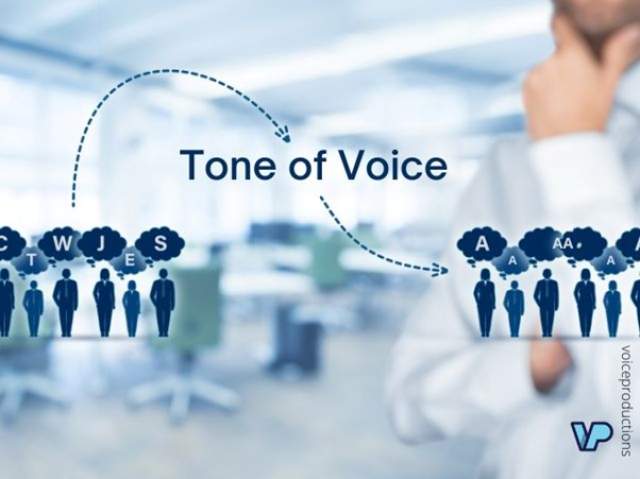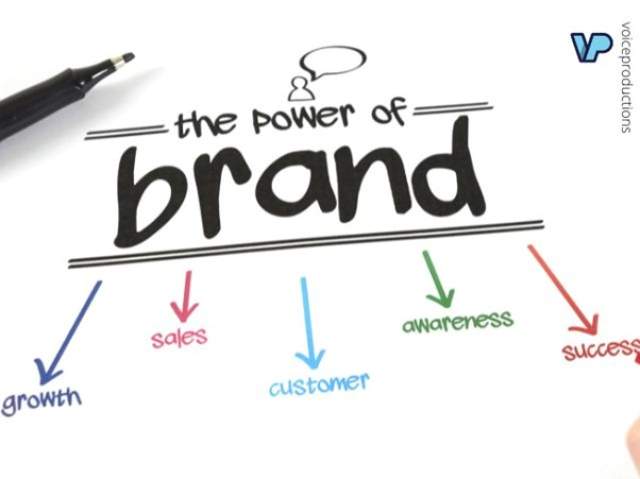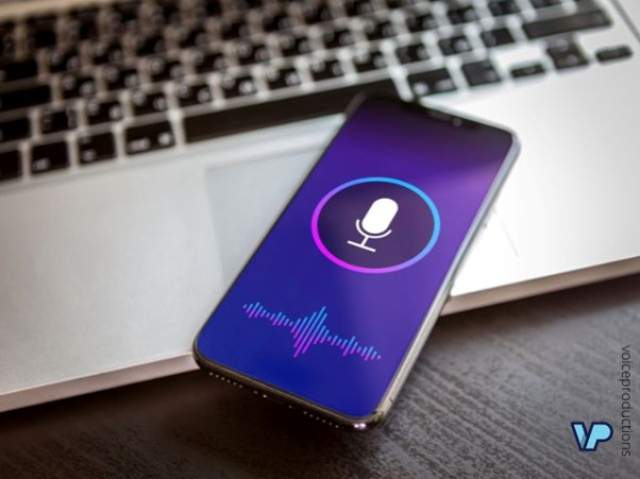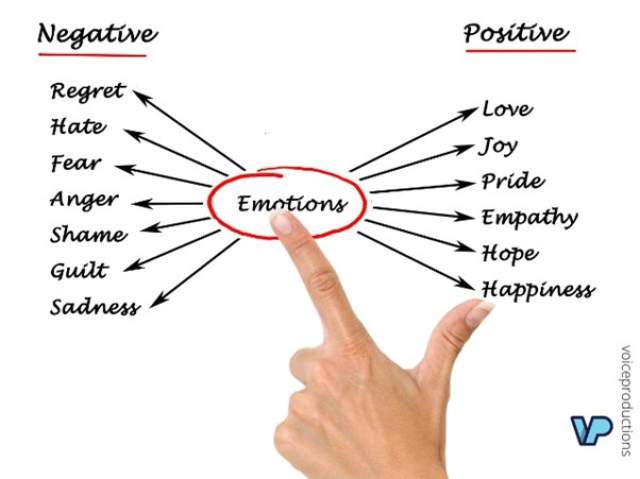The Psychology of Tone of Voice: Building Brand Identity through Sound

Tone of voice is more than a tool, it's a bridge between speaker and listener. It carries the power to influence, persuade, and even evoke specific emotions.
Tone of voice is more than a technique. It is how we connect. It shapes what people feel when they hear us. A good tone can build trust. A wrong one can break it.
Using the right tone of voice is key in any message. Especially when it comes to voice-overs. You only have one shot to get it right.
In this article, we dive into how tone affects perception. How it drives action. And how it helps brands speak with meaning.
This article in 30 seconds
-
Tone of voice goes beyond mere words; it's a critical factor in shaping emotions and perceptions in brand communication.
-
Different tones evoke varied emotional responses, influencing how messages are received and trust is built.
-
A consistent and well-defined brand voice reflects a brand's core values and personality. Implementing brand guidelines ensures consistent and coherent messaging across all platforms.
-
We will discuss the following types of intonations specifically:
-
Positive intonation — this can significantly enhance customer loyalty, and positively shape brand perception.
-
Humorous intonation — humor can engage. It requires careful use to avoid alienation or misinterpretation.
-
Informative intonation — in educational content, this tone of voice prioritizes clarity and understanding. It aids comprehension and retention.
-
Formal intonation — the use of formal tones varies with context and audience. It's key in professional settings, but may be less suited for casual ones.
-
-
Analyzing case studies of tone usage provides valuable insights for strategic decision-making.
-
Regular assessment using feedback and engagement metrics helps refine a brand's tone of voice.
-
Adapting tone to match audience preferences and psychology will significantly boost engagement and connection.
-
A well-crafted tone of voice is vital for a strong identity and connection.

The Psychology of Perception and Tone of Voice
Want to understand why the human voice is so powerful? Start here:
-
Emotional tone influences how people respond
-
Tone shapes the way we interpret words
-
Body language plays a hidden role, even in sound
The Emotional Tones in Communication
Tone carries emotion. It fills your message with warmth or authority. A kind tone soothes. A sharp one creates distance. The same sentence can sound helpful or cold. It all depends on how it is delivered.
The influence on Perception
People don’t just hear your words. They feel them. A strong tone gives your message power. It adds weight and meaning. It helps people trust what you say.
Language, Emotion, Response, and even Body Language
Words, tone, and emotion are all linked. The right tone sparks something in the listener. It makes your message stick. It makes it matter.
Even your posture and expression play a role. A voice actor who smiles sounds different. A straight spine adds presence. That energy carries through, even if no one can see it.

The Essence of Brand Voice
Your brand voice is how your company sounds. It is more than your message. It is your identity. It shows what you value and how you treat people.
Emotion makes your voice human. Think about a simple act, like buying an apple. It is not just a transaction. There’s feeling involved. Desire. Memory. Satisfaction. Your tone should carry that same weight.
No matter the channel, your voice should stay consistent. Video. Ads. Phone. Website. Your tone should always feel like you.
How do I create a Brand Voice?
-
Know what you stand for
-
Decide what role tone plays in your brand
-
Keep it consistent in every message
Defining your Brand Voice
To define your voice, you need clarity. What do you believe in? What kind of company are you? What do your clients expect from you?
Your tone grows from those answers. It gives shape to your values. It becomes your signature.
Role of Tone in Brand Personality
Tone shows who you are. Maybe your brand is playful. Or maybe it is calm and focused. Your tone should match.
When your tone feels honest, people notice. They connect with you. But if your tone feels off, they pull away.
Consistency Across Platforms
People trust what they recognize. That is why your tone should stay the same across every platform.
If your website sounds friendly, your phone voice should too. If your ads are confident, your emails should not sound unsure. A strong tone of voice builds reliability.
Positive Tone and Brand Trust
A positive tone helps people relax. It builds a sense of safety. It makes your message easier to hear and remember.
What defines a Positive Tone?
Positivity isn’t just cheerfulness. It is about warmth and empathy. A tone that says, “we see you.” A tone that makes someone feel understood.
When brands use a positive tone, people feel good. And when people feel good, they come back.
What is the impact of positive intonation?
Your tone sets the mood. And mood affects behavior.
When your tone is warm, people are more open. They are more likely to stay, to trust, to act.
In a sea of cold, generic messages, a kind voice cuts through. It resonates. It makes people feel something. And that is what lasts.
We have written more about this at VoiceProductions. Certain types of voice-overs really benefit from positive intonation:
-
Podcasts

Humor in Tone: A Double-Edged Sword
Balancing a humorous tone with Professionalism
Humor gets attention. It disarms. It makes your brand feel real.
But humor is also risky. It is subjective. What is funny to one person may fall flat with another.
You need to know who you are speaking to. And when it is better to hold back.
Engage your listeners with humor
Used well, humor makes people feel closer to you. It adds lightness. It keeps messages engaging.
But the key is this. Be clear first. Respect your listener. Never let the joke overshadow the message.
The Informative Tone in Educational Content
Clarity and Understanding: The Pillars of Informative Communication
When you create educational or instructional content, your tone matters. It is not just about passing on information. It is about doing it clearly, calmly, and with purpose.
Utilizing an Informative Tone of Voice
Choosing an informative tone shows you care about clarity. You are not just speaking, you are guiding. You help the listener make sense of what you say.
With this tone, you show:
-
Transparency
-
A willingness to share knowledge
-
That you want to build trust through clear communication
Whether you are breaking down science, explaining trends, or walking someone through a process, an informative voice helps the message land. It does more than share facts. It helps people use them.
Informing through sentence structure and word choice
An informative tone depends on how you build your sentences. On the words you pick. Short, clear sentences help people follow along. Well-chosen words prevent confusion.
This tone is not about dumbing things down. It is about opening the door to understanding.
VoiceProductions regularly writes about voice-overs that benefit from this tone. For example, e-learning projects often rely on an informative delivery.

The Role of Formality. When to use a Formal Tone?
Adapting Tone to suit the Occasion
A formal tone can work wonders. In the right setting, it shows professionalism and respect. But if it is used in the wrong place, it can feel stiff or distant.
Here are a few places where formality is not just useful, but necessary:
-
Corporate Videos: A formal tone helps the message feel polished and serious. It makes the brand feel strong and competent.
-
Interactive Voice Response: These are the voices that guide people through call menus. They must be calm, clear, and respectful. Formality shows care and helps avoid frustration.
-
Voicemail: First impressions count. A formal tone gives your caller confidence. It suggests that their message will be handled with care.
In contrast, a social post for a young audience might need a looser, more casual tone. The key is context. Know your audience. Know what they expect.
Understanding context and audience
Your audience decides how you speak. Are they expecting clarity, friendliness, or formality? Understanding this makes all the difference.
Sometimes you can be warm and clear. Other times, firm and direct. What matters is staying close to your brand voice and close to the needs of your audience.
Find your voice in our voice-over marketplace. Listen to demo’s or set up a voice-casting to find the perfect voice-over.
Explore voice-over solutions with VoiceProductions' experts
Do you want to learn how to incorporate the correct essence within your voice-over? VoiceProductions recognizes the profound impact of 'tone of voice' in communication.
Our expertise in voice-over services ensures that every message is not only heard, but leaves a lasting impression in professional voice-overs. To illustrate the impact of different speaking tones, consider listening to a few voice examples from our VoiceProductions portfolio.
If you're looking to elevate your brand's communication with the perfect tone of voice, our team at VoiceProductions is here to assist. Whether you have questions about our services or would like to request a non-binding quote, our experts are ready to guide you.

Brand Voice Guidelines: Keeping everyone on the same page
Creating a Unified Voice for Your Brand
Your brand voice should be clear, defined, and easy to use. Guidelines help make that happen.
Developing Brand Voice Guidelines
To build your brand voice, outline how your tone should sound. What words match your brand? What kind of language fits? Where do you draw the line?
Ensuring consistency
Guidelines are not just for style. They help your voice stay consistent in everything you publish—from social posts to emails.
A strong voice builds recognition. It makes your brand easy to remember.
Case Studies: Tone of Voice in Real-Life Scenarios
Learning from Real-World Examples
Analyzing real-life examples offers valuable insights into effectively using tone of voice. Through case studies, we can understand both the successes and pitfalls associated with different tonal strategies. It's always a good idea to look at a few examples.
Success Stories
Looking at brands that have effectively used their tone of voice is enlightening. For example, a company that employs a confident tone might show increased customer engagement and loyalty.
Take a look at the voice examples of our case studie for H&M. Or at the multilingual case study for NiKo.
Learning from Mistakes
Sometimes, tone misses the mark. It feels off. Or worse, it feels fake. These missteps teach us how important alignment really is.
Case studies remind us: when tone fits, everything flows. When it doesn't, people notice.

Tone of Voice Across Different Channels
Your tone should adjust depending on where it appears. But it should always feel like you.
The words on your website, the voice in your ads, the replies in customer support—each one should echo the same personality.
Email Communication
Email often calls for a formal or semi-formal tone. Be clear, but stay human. Your audience should feel respected and heard.
Social Media and Advertising
On social media, you can be more relaxed. Humor and personality can shine. In advertising, the tone might need to be bold or persuasive. It depends on your campaign goals.
Case Examples
When customer service uses a calm, patient tone, satisfaction goes up. When social media uses a confident voice, engagement grows.
Matching your tone to each channel makes your message land more effectively.

Measuring the Impact of Tone of Voice
Evaluating the Effectiveness of Your Tone
How do you know if your tone works? Measure it. Track reactions. Look at the data.
How do I measure the Impact of Tone of Voice?
Start here:
-
Collect customer feedback
-
Watch your engagement numbers on social
-
Check your conversion rates
Key Metrics and Methods
The numbers will tell you what tone works. More clicks. More replies. More signups. It all adds up.
Audience Feedback
What do people say? Are they confused? Are they excited? Use what they tell you to guide your tone.
The more feedback you gather, the more your tone can grow and improve.
Practical Tips for Aligning Tone with Audience Psychology
Want to make your tone hit home? Focus on what your audience needs and expects.
-
Learn what they respond to
-
Choose your tone based on context
-
Be ready to adjust when things change
Tailoring Tone to Audience Needs and Expectations
Use tone with care. Your audience has its own style, its own rhythm. When you match that, your message feels right.
Strategies for the Right Tone
Think about age, setting, and purpose. A casual tone might be great on Instagram. But maybe not in a business proposal.
Adjusting Tone to Match Expectations
Tone is not static. If the world changes, your message should too. In tough times, be gentle. In high-energy moments, bring the spark.
The more you listen, the better you adjust. That is how tone stays relevant.

Conclusion
The Lasting Impact of Tone in Communication
-
Recap what tone can do
-
Keep it consistent
-
Keep learning
Recap
Tone shapes how people feel. It builds trust. It adds meaning. It makes your brand voice memorable.
Consistency Matters
Stay consistent. Use guidelines. Use feedback. Let your tone grow into something people recognize.
Keep Developing
Refining tone is not a one-time task. It is something you keep doing. With care. With feedback. With intention.
The right tone creates real impact. It helps your message land. And it helps your brand connect.
Want help getting there? Talk to us. VoiceProductions is ready to help you find the voice your brand deserves.
Let's make it heard.
Written by: Loïc Thaler